Squeaky shoes are generally caused by trapped moisture in parts of the shoe that rub together as you walk.
Squeaking can also be caused by new rubber rubbing against things.
To make your shoes stop squeaking all you need to go is either get rid of the moisture or find a way to soften the rubber.
Here are 10 things you can do to get stop your shoes squeaking once and for all:
1. Use Talcum Powder
Talcum powder is made up of magnesium, silicon and oxygen.
These elements combined together create a powder which is excellent at absorbing moisture and reducing friction.
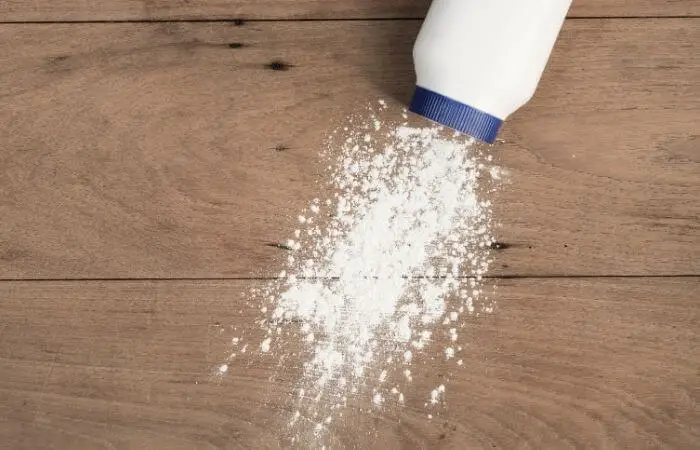
Moisture is one of the primary causes of squeaky shoes.
If water gets between parts of the shoe which rub together as you walk, such as the insole and the sole or on the tongue then this can often be the source of noise problems.
Take out your insole, loosen the laces and apply talcum powder in areas where moisture is likely to collect.
Take your finger and feel around the inside of your shoe for any damp, if you find any then apply more talcum powder.
Pros Of Using Talc:
- Cheap
- Easy to apply
- Effective for dealing with sweaty feet
Cons Of Using Talc:
- Can be messy
- Needs regular reapplication
2. Dry The Insides Of Your Shoes
As we said before damp is one of the leading causes of squeaky shoes.
There are plenty of ways other than talcum powder to dry them out:
- Fill them with newspaper
- Put them in an airing cupboard
- Put silica gel packets inside them
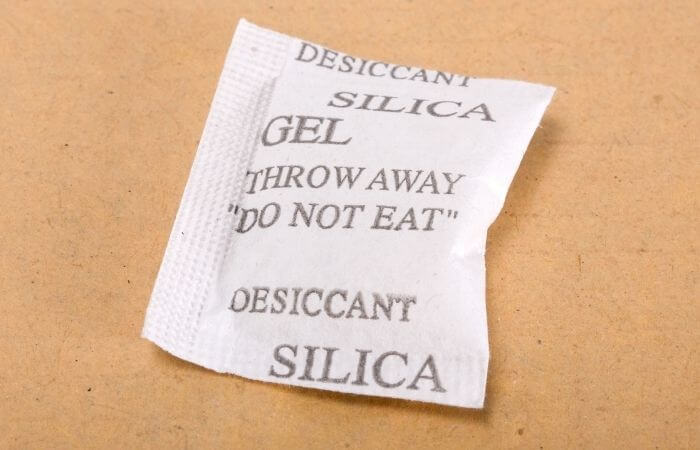
Newspaper and silica gel will absorb all the damp from your shoes providing you leave them in for long enough.
Putting them in a warm place such as a laundry room or airing cupboard will also help speed up the process of drying them out.
Pros Of Drying The Insides:
- Effective
- Easy to do
Cons Of Drying The Insides:
- Can take hours
3. Put Shoes In The Tumble Dryer
Putting your shoes in the tumble dryer will completely dry them out thus solving your problem.
However be aware that tumble dryers are not designed to dry shoes.
If you’re not careful not just your shoes but also the dryer could be damaged.
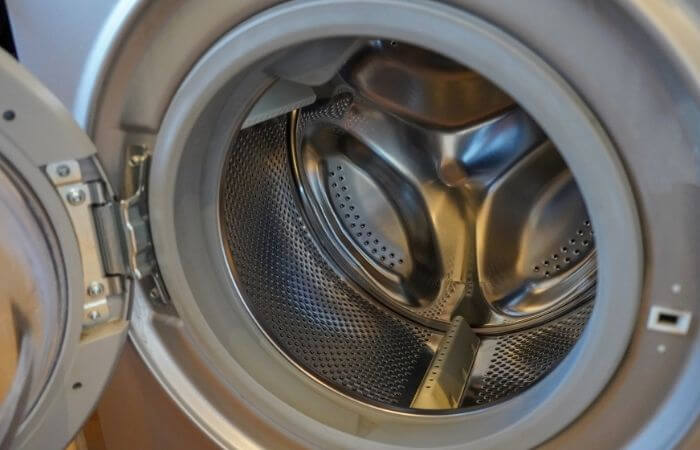
If you are going to tumble dry your shoes we recommend that you don’t do it on a pristine brand new pair of shoes that you love.
Only use this method on old shoes and make sure you put the dryer on a fairly low heat setting.
A better option is just leaving your shoes out in the sun for a few hours, however that’s not always an option…especially in winter when shoes are more likely to get damp.
Pros Of Using A Tumble Dryer:
- Quick, effective way of drying shoes
Cons Of Using A Tumble Dryer:
- Can damage the shoes
- Can damage the tumble dryer
4. Wear Them In
It is not uncommon for brand new rubber soles to squeak.
When you first buy them the rubber is hard and shiny, in fact it is not unheard of for manufacturers of more formal shoes to paint the soles with black paint which makes the soles look smart and shiny.
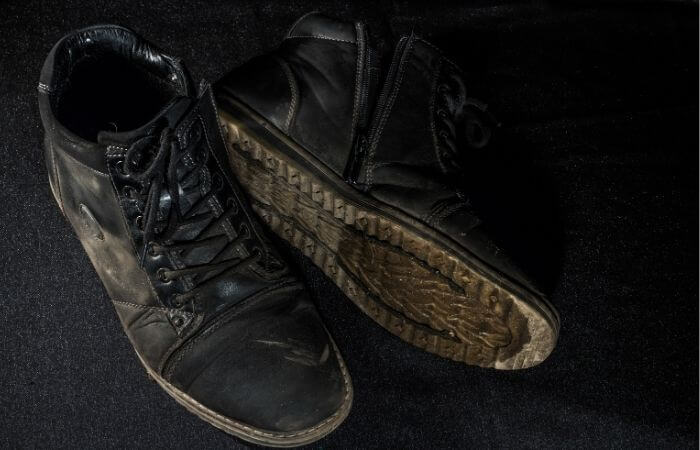
Hard, shiny, painted rubber soles will be squeaky, particularly on smooth flooring.
Regardless of the type of shoe you have bought the rubber of most soles will soften after a couple of days of wear.
Just make sure you get a few miles of walking done in them (don’t just wear them sitting at your desk) and the squeak will disappear.
Alternatively you can use a fine grit sandpaper to roughen up the soles a little bit and take the sheen off them.
Pros Of Wearing Them In:
- It usually works!
Cons Of Using A Tumble Dryer:
- Takes a couple of days
If you’re planning on sneaking up on someone then it is essential that you are not wearing squeaky shoes!
Once you’ve got your shoe squeak fixed why not learn how to walk silently?
5. Polish The Leather
New leather is also prone to squeaking.
As with rubber, leather softens with use so often just walking around in your shoes for a couple of days will fix the problem.
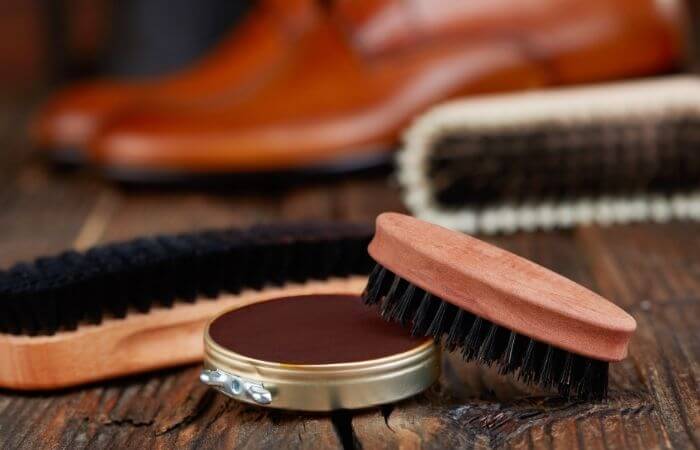
However polishing the leather will also help.
Polishing leather helps it to stay flexible, prevents water from getting into it and gives the leather a nice shine.
Polishing will therefore help reduce friction, help leather parts around the tongue slide over each other more silently and it will reduce damp-related squeaks.
Pros Of Polishing:
- Helps your shoes stay flexible
- Reduces leather on leather friction
- Prevents damp penetration
Cons Of Polishing:
- Can be messy
- Doesn’t work on non-leather shoes
6. Use A Waterproof Spray
If your shoes aren’t made from leather then polishing them isn’t an option, using a hydrophobic spray is an effective alternative that will keep out damp.
Products like Scotchgard and Kiwi are well known for their hydophobic spray products.
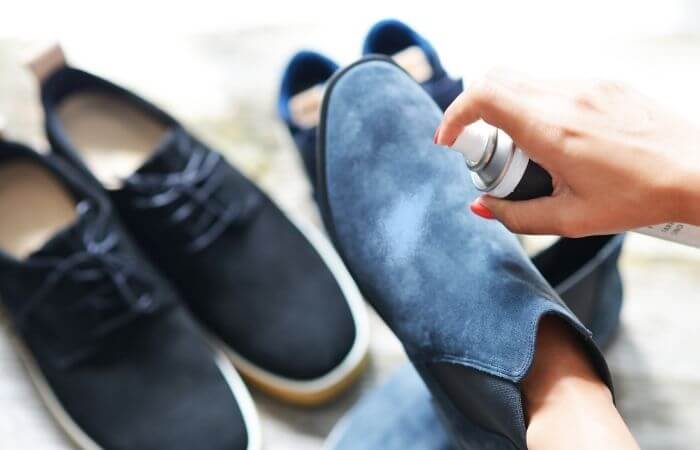
They will protect your shoes from all liquids and can also help reduce squeaking noises that your shoe can make if the tongue is rubbing on its uppers.
Pros Of Waterproof Spray:
- Very easy to use
- Waterproofs your shoes
Cons Of Waterproof Spray:
- Needs regular reapplication
7. Check The Laces
If you’ve decided to customise your shoes with some unique new laces it’s worth double checking that they fit properly.
If you had a tough time threading them through the eyelets then is an indicator that the lace is too thick.
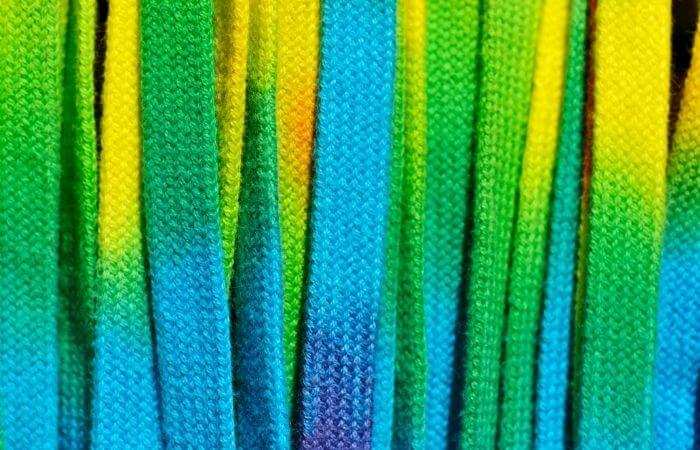
Overly thick laces will cause unneccessary friction against the eyelets which may cause squeaks.
Swapping your laces out for a thinner pair will solve your shoe noise problem.
Pros Of Changing The Laces:
- Simple fix
Cons Of Changing The Laces:
- You may have to get rid of your new laces
- Re-threading laces can be tedious
8. Check Any Insoles/Inserts
You may use shoe inserts for a medical reason, or you like appearing fractionally taller or perhaps you just like how much more comfortable they make your shoe.
Whatever your reasons for wearing them are it is important to ensure that they fit correctly.
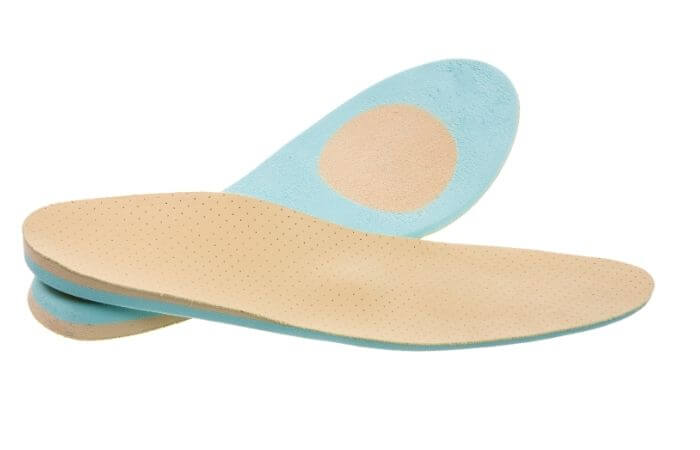
Medical inserts are custom made to fit, however if you’re using inserts purely for comfort then chances are you will use a generic one which isn’t purpose made for you.
If you can see a specialist to get custom inserts made then we advise you do that, however we appreciate that most people are unlikely to do that.
Instead when you buy your insole take time to properly fit it inside your shoe.
Trim off any excess to ensure that it precisely fits inside your shoe.
A good fit will reduce unwanted noise.
Pros Of Checking The Insoles:
- Your shoes will be quieter & more comfortable
Cons Of Checking The Insoles:
- Can be fiddly cutting them to size yourself
- Custom insoles can be expensive
9. Change The Heel / Sole
If the pair of shoes that are bothering you are old then the squeaking may be caused by wear and tear.
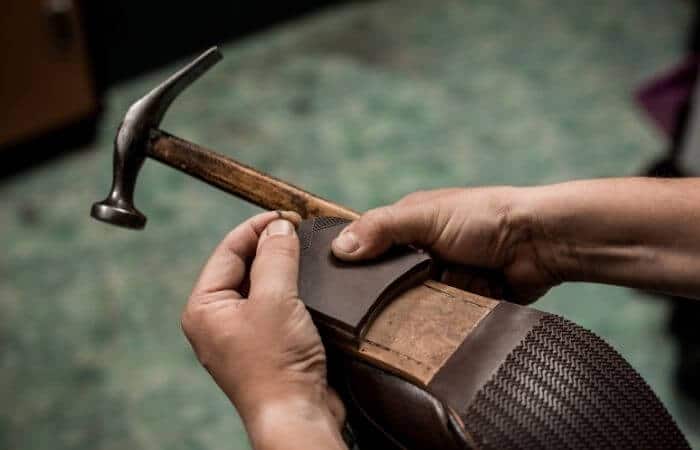
If they were an expensive pair of dress shoes then it can be worth taking them to a cobbler to get them re-heeled and re-soled.
Pros Of Changing The Heel/Sole
- Keeps old shoes going for years to come
Cons Of Checking The Inserts:
- Can be expensive
- Only doable for dress shoes
- Only worth doing for expensive shoes
Just don’t get your shoes reheeled with a high heel as they are always noisy (if not squeaky), you’ll probably struggle to make them particularly quiet even if you’ve read our piece on how to make heels quieter!
10. Seal Loose Parts
It is not uncommon for rubber parts of trainer to come loose over time, if this happens this can both allow water into parts of the shoe where it shouldn’t be, and it can create extra friction.
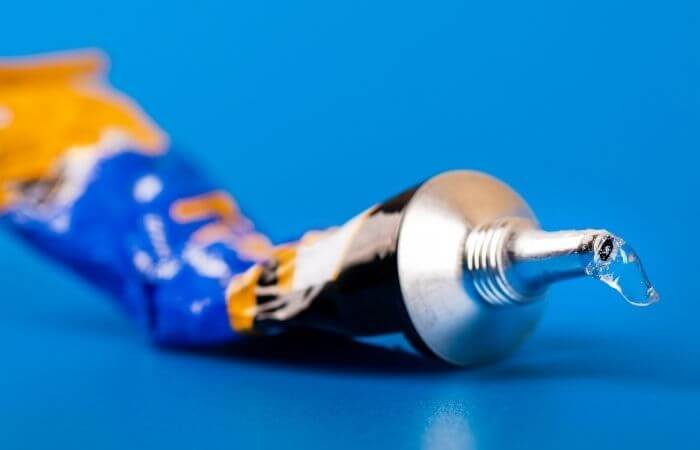
Most commonly the soles will begin to detatch from the fabric of the shoe or the outsole may begin to detatch.
To fix this get some super glue, fill the gap with glue and close tightly, then wipe away any excess on the outside of your shoe.
Hold the shoe together for a minute or so and it should be back as it was intended to be with no loose parts to make noise with.
Pros Of Sealing Loose Parts:
- Cheap & Easy To Do
Cons Of Sealing Loose Parts:
- Can mess up the fit/shape of the shoe if you don’t glue parts exactly where they are supposed to go
- Only doable for canvas shoes/trainers
As an Amazon Associate I may earn a small fee from qualifying purchases at no extra cost to you. This helps us run the site, so thanks for your support!